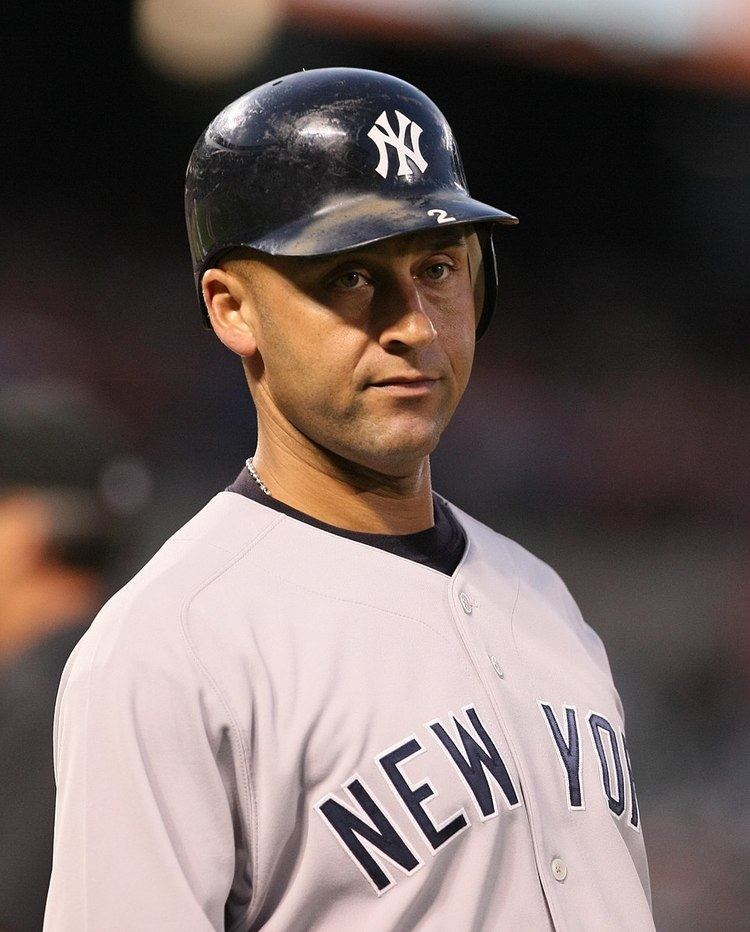Date(s) June 1, 1992 First round selections 38 | Overall selections 1,412 | |
 | ||
First selection Phil NevinHouston Astros | ||
The 1992 Major League Baseball draft took place on June 1, 1992, through a conference call involving all 28 MLB teams of the time. Phil Nevin of Cal State Fullerton was the first overall selection, chosen by the Houston Astros. Derek Jeter, widely considered a future member of the National Baseball Hall of Fame, was selected by the New York Yankees with the sixth selection. In addition to Nevin, Paul Shuey, B. J. Wallace, Jeffrey Hammonds, and Chad Mottola were selected ahead of Jeter.
Contents
First-round selections
The 1993 expansion Colorado Rockies and Florida Marlins participated in the MLB Draft for the first time in 1992.
With the first overall selections of the previous two drafts, Chipper Jones and Brien Taylor, receiving signing bonuses of $1.2 million ($2,199,796 in current dollar terms) and $1.55 million ($2,725,470 in current dollar terms) respectively, salary demands of new players became a factor in the 1992 draft. Prior to the draft, Jeffrey Hammonds of the Stanford Cardinal baseball team sought a signing bonus of $1.8 million ($3,071,994 in current dollar terms). Derek Jeter, a high school player who had a commitment to play college baseball at the University of Michigan, was believed to be seeking a bonus of at least $1 million ($1,706,664 in current dollar terms) to forego college.
The Astros, holding the first overall selection, were keenly aware of the bonus demands of Hammonds and Jeter, as they were unable to sign their first-round pick in the 1991 MLB draft, John Burke, who held out for a bonus of $500,000 ($879,184 in current dollar terms) as the sixth overall selection. They selected Phil Nevin, the 1992 College World Series Most Outstanding Player, with the first overall selection. In addition to perceiving Nevin as close to MLB-ready, needing little development in minor league baseball, Nevin also did not seek a large signing bonus. He agreed to sign with the Astros for $700,000 ($1,194,664 in current dollar terms). Astros' scout Hal Newhouser quit in protest, as he had insisted to Astros' management that they should choose Jeter.
The teams with the first four selections, the Astros, Cleveland Indians, Montreal Expos, and Baltimore Orioles, had the four lowest payrolls in MLB. The Cleveland Indians selected Paul Shuey out of the University of North Carolina with the second selection, who they projected could develop into a closer comparable to Rob Dibble. The Expos, who preferred Hammonds, drafted B. J. Wallace instead, as they were unable to afford Hammonds' salary demands. The Orioles selected Hammonds with the fourth overall selection; he signed with the Orioles for $975,000 ($1,663,997 in current dollar terms), the largest signing bonus given out in the 1992 Draft. With the fifth pick, the Reds chose Chad Mottola from the University of Central Florida (UCF), making Mottola the first UCF athlete to be chosen in the first round of a professional sports draft. He signed with the Reds the day of the draft for $400,000 ($682,665 in current dollar terms).
Yankees scout Dick Groch, assigned to scout in the Midwest, watched Jeter participate in an all-star camp held at Western Michigan University, and came away sold by Jeter's talent. Though the Yankees were also concerned that Jeter might attend college, Grouch convinced the team to select Jeter. Regarding the possibility Jeter would attend Michigan, Groch said "the only place Derek Jeter's going is to Cooperstown", referring to the home city of the Baseball Hall of Fame. Jeter signed with the Yankees for $800,000 ($1,365,331 in current dollar terms).
Scott Boras advised Charles Johnson and Michael Tucker. Those players fell in the first round as their perceived salary demands were too high for many teams.
